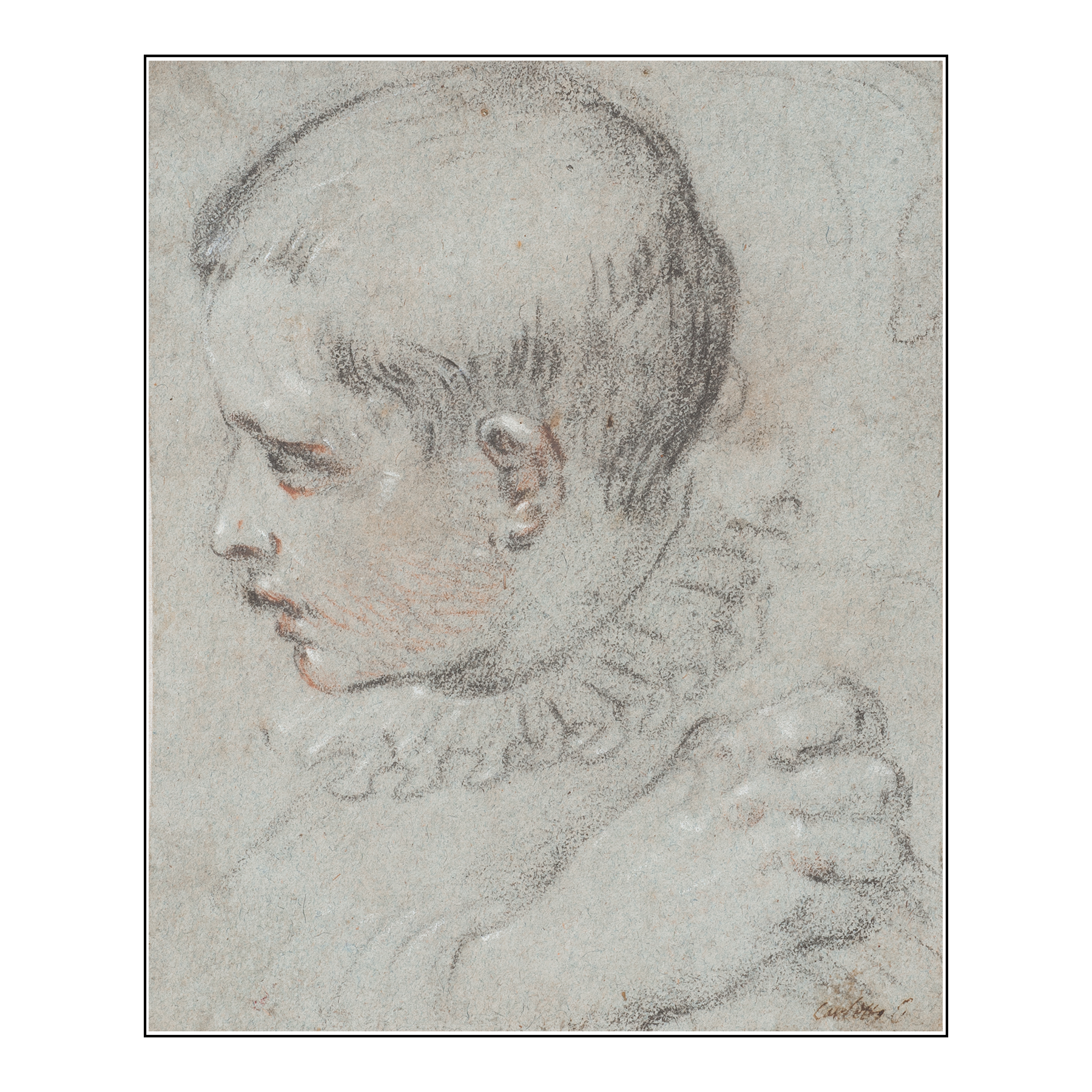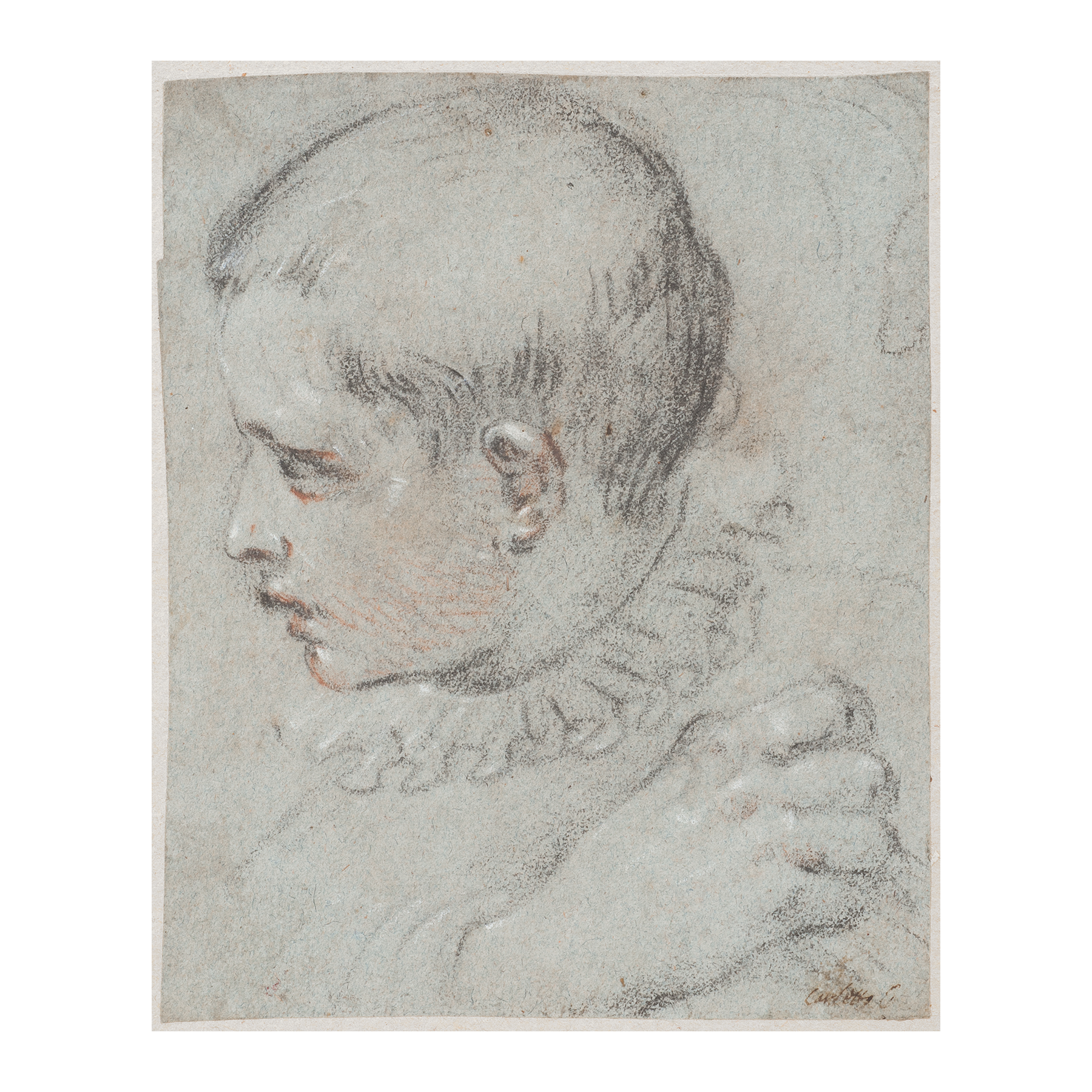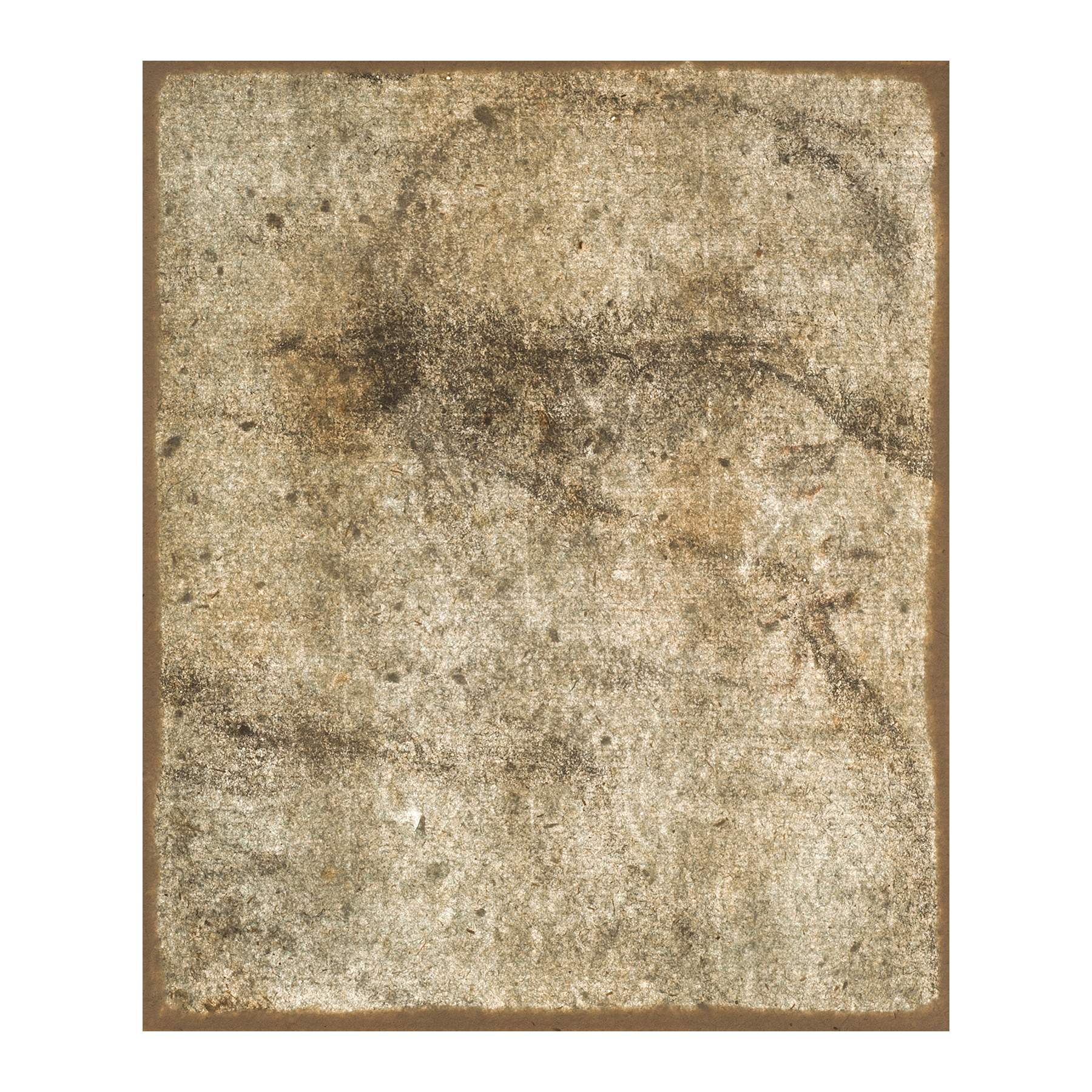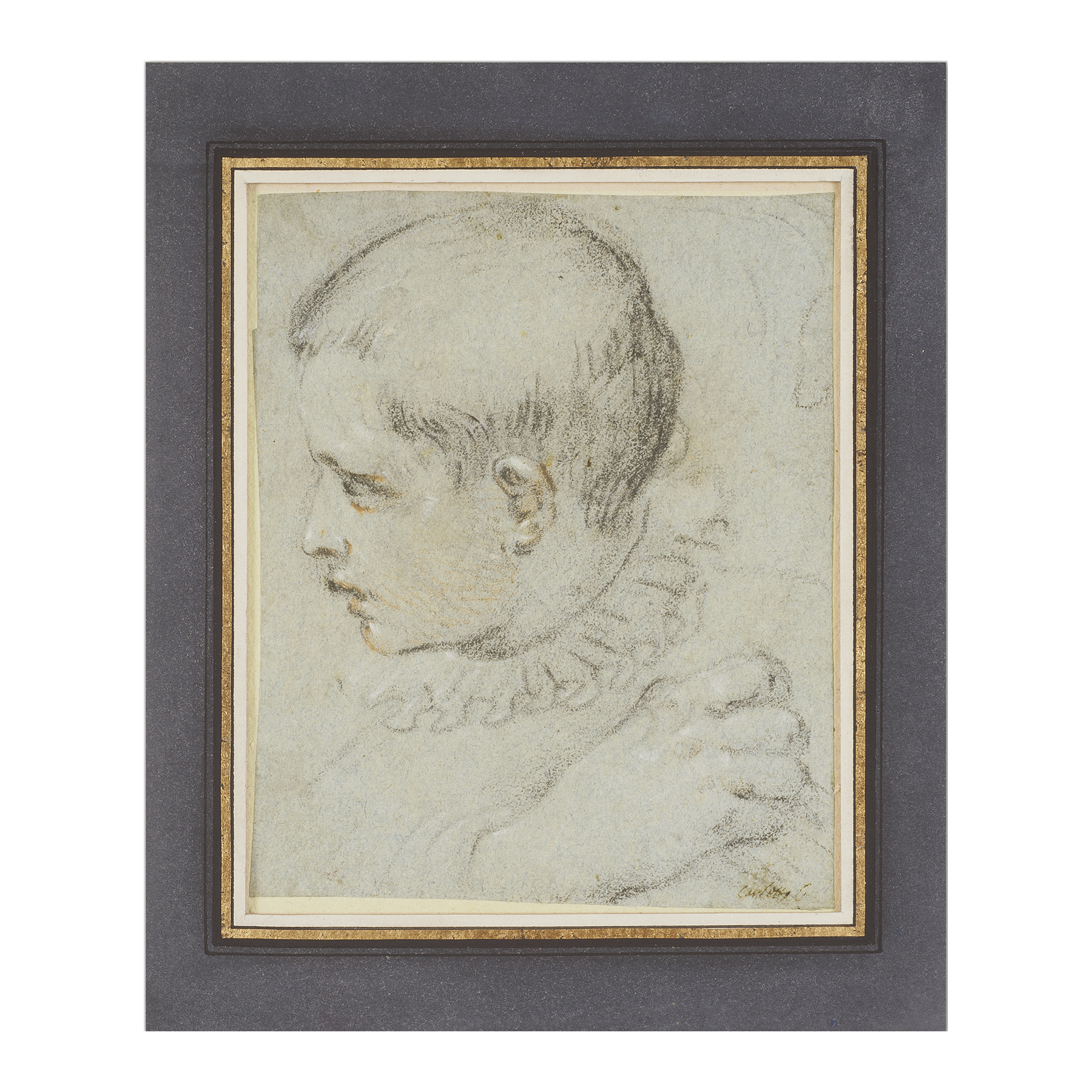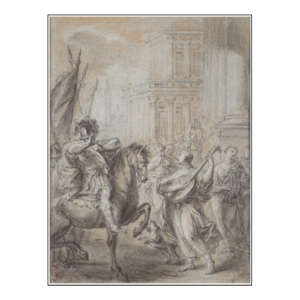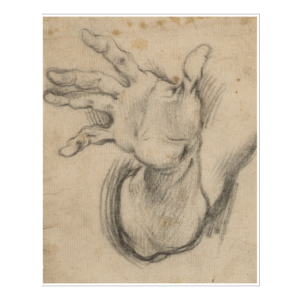Carletto Caliari
Venice 1570 – 1596
Study of the head of a young man in profile and of a hand (recto); two studies of an arm (verso)
Black chalk, heightened in white chalk and strokes of red chalk over blue paper
Inscribed Carletto C and on the verso C.C. N° 49
146 x 116 mm – 5 3/4x 4 9/16 in.
Provenance – Giuseppe Caliari ; Zaccaria Sagredo, Venice 1653 – 1729, (Lugt 2103 a); Sotheby’s 1 July 1971, lot 27; private collection.
Bibliography – Julian Stock, Disegni veneti di collezioni inglesi, Venice, Cini, 1980, p. 50, No. 58, illustrated; W.R. Rearick, Maestri veneti del Cinquecento, Biblioteca di disegni, vol. 6, Florence, 1980, No. 34, illustrated.
This beautiful study of head is the work of the great painter Veronese’s younger son, Carlo Caliari, called Carletto. Trained within the family studio, Carletto also received education from another great Venetian family of painters, the Bassanos. Upon Veronese’s death, Carletto and his older brother Gabriele (1568 – 1631) took on his atelier, helped by their uncle Benedetto. Together they completed some of his unfinished works under the common name Haeredes Pauli, which does not facilitate distinguishing their hands. Eight paintings bear Carletto’s signature and several others are mentioned by the biographer of Venetian painter, Carlo Ridolfi, which allows to bring out an artistic personality with a rather well-defined profile. Carletto’s main characteristics are a warm palette inherited from his father, a technique inherited from Bassano, and a combination of formal references to both masters. The influence of the Bassano family on Veronese’s younger son is evident, particularly in his graphic style and the use of pastel and coloured chalk in nearly all of his drawings, if only for heightening.
Most of Carletto’s drawings that have survived to date come from the famous Sagredo-Borghese album. After the death of Gabriele, all the Caliari graphic and artistic material initially went to his son Giuseppe Caliari, who remained its depositary until his death. His posthumous inventory of 1681 lists about 1500 drawings without distinction of hands. Doge Nicolo Sagredo (1606-1676) appears to have begun to collect drawings in the mid-17th century, and his heirs seem to have imitated him. Thus, it must have been his brother Stefano or his nephew Zaccaria that bought Caliari’s sheets and annotated them using the system of initials and numbers.The inscription Carletto C can be found on many of the sheets, some of which have been connected with paintings. The present drawing is reminiscent of the works in a collection from the Skippe sale at Christies in 1958, formerly in the so-called Sagredo-Borghese album. Previously attributed to the Bassanos, these drawings have been given to Carletto by William Roger Rearick (see Rearick, Il disegno veneziano del cinquecento, Milan, Electa, 2001, p. 180) as the result of connecting them with paintings. A rather consistent group of drawings by the artist has thereby been put together and given back to Carletto.
The studies on the present sheet can also be connected to some of Caliari’s paintings. The head of a young man recalls the pageboy in the Christ Meeting St. Veronica (Basilica dei Santi Giovanni e Paolo, Venice) who presents the same facial type with a straight and well-delineated nose, short straight hair, similar expression of concentration and seriousness, intense look, and slightly open mouth. As for the hand that seems to be seizing a drapery, it can be connected with several hands of the figures in the painting Shah Abbas, First Ambassador to Europe, in Venice (Venice, the Doge’s Palace, 1595), and most particularly with the hand of the doge. Finally, the arm studies on the verso remind, in the reverse, of the arm of one of the beggars in Alms of St. Christina (Bergamo, the Accademia Carrara).
Condition report – False margins – the edges irregularly cut. The black and color chalks are fresh.
